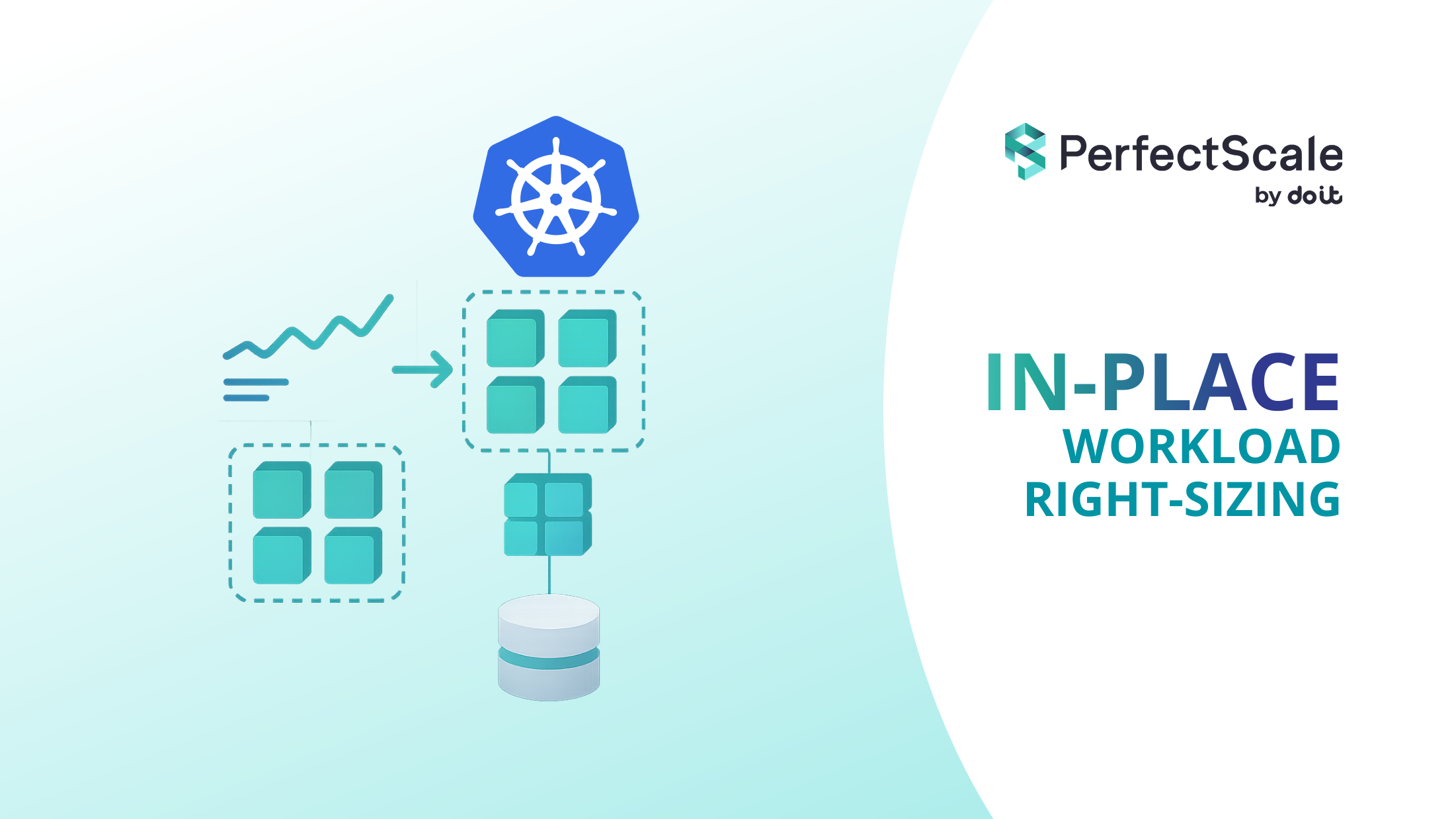The ImagePulBackOff error is the most common Kubernetes error that DevOps engineers face in their day-to-day lives. This error not only creates a problem in deployment but also acts as a critical signal pointing towards issues with accessing or retrieving container images from image registries.
Here are some of the main errors you might encounter in Kubernetes, and quick advice for how to resolve them.
- Kubernetes CrashLoopBackoff: An Ultimate Guide
- The Ultimate Guide: Kubernetes CreateContainerConfigError and CreateContainerError
- How to fix OOMKilled in Kubernetes
- Kubernetes Node NotReady: Troubleshoot & Best Practices
In this article, we will explore what is ImagePullBackOff, its causes, and how to troubleshoot it.
What is ImagePullBackOff?
When we all started our Kubernetes journey, we always did the practical task of deploying pods onto the Kubernetes cluster, and the error is related to this particular task. As the name suggests, the error is associated with pulling a container image onto the Kubernetes cluster. When you try to deploy your application as a container image onto the Kubernetes cluster, you might run into this error called ImagePullBackOff. It has two parts: ImagePull and Backoff. The first part suggests an error in pulling the image, and backoff is an algorithm that Kubernetes uses when each attempt fails, and Kubernetes waits for a longer period before trying again. This wait time increases with each failure, up to a maximum backoff limit.
Causes of ImagePullBackOff:
Different scenarios cause the ImagePullBackOff error. Let's discuss the causes:
1. Invalid image: It's a very common mistake that we make generally. Let's say you want to deploy a pod onto the Kubernetes cluster, and you are using the nginx image in your manifest. If you mistakenly write the wrong image name, as below in the manifest, that does not exist, it will cause an error of ImagePullBackOff.
2. Non-existent Image: If you are pointing to an image in your manifest that does not exist or was deleted by anyone, it will cause an error of ImagePullBackOff because that image cannot be found anywhere to be pulled.
3. Not Authorized for the Image Registry: When you deploy your application as a container image, but the container image is private and secure, it means you can't access the image without credentials or authorization. If an image is private and you do not mention the credentials in your manifest file, you will encounter an ImagePullBackOff error.
What happens during ImagePullBackOff?

When a pod enters the ImagePullBackOff state, it retries to pull an image for your pod. If, due to some issue, it is not successful in pulling the image for the first time, it refers to the backoff strategy to increase the time after each failure. Kubernetes retries pulling the image after each backoff period, but eventually, when it fails to pull the image, it ends up with the status of ImagePullBackOff.
What is ErrImagePull Error?
When there is a problem in pulling the container image for your pod, Kubernetes tries to increase the time or wait to pull the image for your pod, but when it does not succeed in pulling the image for the first time, it tries again, and if it's again not successful, it tries again, and initially, it's waiting for 5 seconds, then it waits for 20 seconds. During this waiting time, Kubernetes throws an ErrImagePull error. It will eventually wait 5 minutes to pull the container image, so if this time it is not successful to pull the container image, then the status will be ImagePullBackOff. Each time, it will add a delay incrementally and try to pull the image for your pod; this process is called a backoff delay.
These errors ErrImagePull and ImagePullBackOff both reflect the same type of cause or issue. ImagePullBackOff results after trying so many times to pull the image, and it's failing.
Troubleshooting ImagePullBackOff error:
To troubleshoot the ImagePullBackOff error, follow the below steps:
1. View Pods Status: Run the kubectl get pods command to check whether your pod is running or not. If it's an error due to image pulling, you can see the status of ErrImagePull.
Wait a minute, then run the get pods command again:
You can see here the status shown as ImagePullBackOff.
2. Inspect your Pod: To inspect the pod and why this error appeared, you can use the kubectl describe pod <pod-name> command to view the events. In the events section, you will get to know the exact reason behind getting the ImagePullBackOff error.
These events say that no image like nginy:1.14.2(used above) exists. That's why you're getting the error of ImagePullBackOff.
How to fix ImagePullBackOff error:
The fix for the ImagePullBackOff error depends on the cause of the problem:
1. Fix Manifest or Image Name: Check your pod’s manifest to see if it contains an invalid image name or a typo mistake in the image name. Once you correct this, you can avoid the error of ImagePullBackOff.
In the above example, we have used the wrong image name; if we correct it, it can be successfully deployed onto our Kubernetes cluster without the ImagePullBackOff error.
Now, apply this manifest again to the Kubernetes cluster by following the command:
See the status of the pod with get pods command. The pod is happily running:
2. Non-existent Image: Make sure your image exists or is not deleted by anyone from where you pulled it. If an image does not exist on the registry and you are trying to pull that image, you will face an error of ImagePullBackOff.
3. Not Authorized for Image Registry: If you are using a private image from the registry, make sure you are authorized for that image registry or you have credentials to use that image in your pod.
In order to pass the credentials to a container registry, you have to create a secret like this:
Note: The secret type is called ‘docker-registry’ but the credentials are compatible with all OCI-compliant registries.
Then you can specify this secret object in your pod definition file under the imagePullSecrets section:
Resolving the ImagePullBackOff error can take time, but understanding its reasons, how to troubleshoot it, and the solution can help you a lot in figuring out the exact cause. By following the steps shown above, you can identify the issue and work with your Kubernetes environment happily.
Fix Kubernetes ImagePullBackOff Errors 10x Faster with PerfectScale by DoiT
PerfectScale Kubernetes governance platform continuously monitors workload behavior and detects signs of instability, such as OOM events or CPU throttling, that often lead to crash loops.
Identify up to 30 Different Resilience Rypes of Risks
PerfectScale’s tracks up to 30 K8S alerts are tailored specifically for Kubernetes. They cover a wide range of potential issues, such as pod failures or resource exhaustion, eliminating the need for deep Kubernetes expertise.

Real-time Alerts without Alerts Fatique
PerfectScale allows users to easily set up alerts for their clusters and manage them efficiently with Alert Profiles. You can easily monitor and get notified about alerts that are relevant for your setup.
For faster updates, utilize Slack or MS Teams Integration Profiles to receive notifications when an Alert is generated.
Get Actionable Recommendations to Eliminate Kubernetes Node NotReady Error
By leveraging real usage data and resilience-aware policies, PerfectScale delivers precise recommendations for right-sizing workloads s at the container level, ensuring workloads have exactly what they need. Whether applied manually or autonomously for immediate impact, these recommendations restore workload stability, eliminate recurring restarts, and help prevent similar failures in the future.
To apply the recommendations, you can effortlessly copy the .yaml and deploy it to your cluster.

Join industry leaders like Paramount Pictures and Creditas who have already optimized their Kubernetes environments with PerfectScale. Sign up or Book a demo with our technical experts now!




.png)








